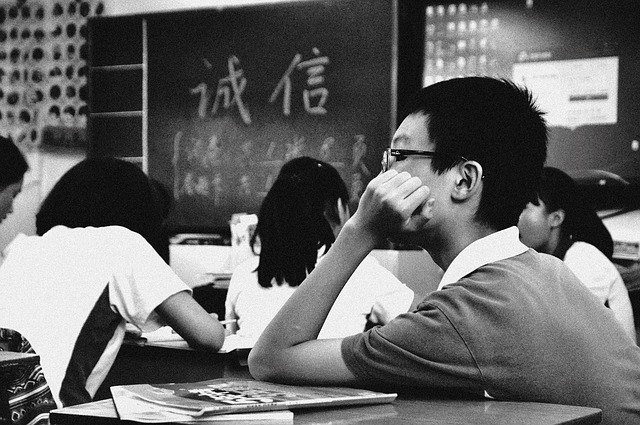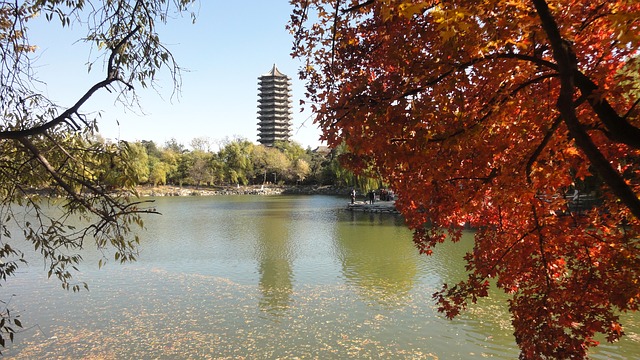Universities in China Posted by sasha on Aug 18, 2021 in Culture
Did you know that China has the largest higher education system in the world? China has around 3,000 universities (大学 dà xué) and colleges, with a total student body population around 30 million (including foreign students). Between 2002 and 2008 alone, the number of higher education students in China quadrupled. The enrollment in tertiary education in China went from less than 10% in the late 90s to around 50% in 2019. In Beijing alone, there are over 90 institutions of higher education – a list that includes a police academy, a sports college, a dance academy, political colleges, and everything in between. In this post, I’ll talk a bit about universities in China, starting with the all important college entrance exam.
The Gao Kao
With more students hoping to enter a college or university than there are open spaces, the admissions process is quite intense and incredibly competitive. The National Higher Education Entrance Exam (普通高等学校招生全国统一考试 pǔ tōng gāo děng xué xiào zhāo shēng quán guó tǒng yī kǎo shì), or Gao Kao (高考 gāo kǎo) for short. This exam lasts for a grueling 9 hours a day over 2-3 days, and varies in different provinces.
Just as American high school students stress out about the ACT or SAT exam, Chinese high school students feel an immense amount of pressure to succeed on the Gao Kao, as their admission into a university or college rides almost entirely on their performance. Some students who fail the exam even repeat their senior year of high school to take it again; others who can afford it simply choose to study abroad, which can cost up to 15-30 times more than in China.
Standard Chinese (普通话 pǔ tōng huà) and mathematics (数学 shù xué) are the two biggest subjects on the Gao Kao exam. Students can also choose one of six foreign languages (外语 wài yǔ) – English, French, Japanese, Russian, German or Spanish – although most choose English as they study it throughout their early school years. Students need to choose between a liberal arts tendency (文科倾向 wén kē qīng xiàng) or a science tendency (理科倾向 lǐ kē qīng xiàng) for the final portion of their exam.
The Gao Kao causes a tremendous amount of stress for students, parents, and teachers. The exam basically dominates the lives of teenagers in China. A high score is their ticket to a prestigious university, while failing it causes one to “lose face” (丢面子 diū miàn zi). It’s so stressful that many schools even block off traffic in front of the building on test day to decrease the distractions. Despite the pressure, around 10 million students still took the Gao Kao in China last year.
Higher Learning in China
For those students who study hard enough and have the smarts to actually make it beyond high school, there are many options for higher learning. There are national universities, as administered by the Chinese Ministry of Education (中华人民共和国教育部 zhōng huá rén mín gòng hé guó jiào yù bù). These schools are known as “Universities directly under the MOE” (教育部直属高校 jiào yù bù zhí shǔ gāo xiào).
In addition, there are provincial universities that are administered by the particular province along with other public universities administered by the municipality. Finally, there has been an influx of privately owned and funded higher learning institutions in the last decade. With so many options to choose from, which institutions are regarded as the best in the land? Here are the top 10 universities in China for 2021:
- Tsinghua University (清华大学 qīng huá dà xué)
- Peking University (北京大学 běi jīng dà xué)
- Zhejiang University (浙江大学 zhè jiāng dà xué)
- Shanghai Jiaotang University (上海交通大学 shàng hǎi jiāo tōng dà xué)
- Nanjing University (南京大学 nán jīng dà xué)
- Fudan University (复旦大学 fù dàn dà xué)
- University of Science and Technology of China (中国科学技术大学 zhōng guó kē xué jì shù dà xué)
- Huazhong University of Science and Technology (华中科技大学 huá zhōng kē jì dà xué)
- Wuhan University (武汉大学 wǔ hàn dà xué)
- Xi’an Jiaotong University (西安交通大学 xī’ān jiāo tōng dà xué)
Year after year, Tsinghua and Bei Da (北大 běi dà) are at the top of the list. Students all across China dream of getting into one of these universities, but only those who ace the Gao Kao can make it in. Students from Beijing definitely have the upper hand when it comes to admissions, which is a point of contention among students all over the country.
Bei Da is the oldest university in the country, dating all the way back to 1898 when it was founded as the Imperial University of Peking (京师大学堂 jīng shī dà xué táng). The campus is located on the site of former Qing Dynasty-era imperial gardens and it’s a beautiful place to visit. I used to walk around there all the time when I lived in the Wudakou (五道口 wǔ dào kǒu) area of Beijing, which is where many top universities are located. Not surprisingly, it’s also a popular place for international students, with around 7,000 attending each year.
While Bei Dai may be more famous, Tsinghua has taken the top spot in many recent years. It’s not only the top university in China, but it’s currently #1 in all of Asia and #15 in the world. The school was founded in 1911 and it also has traditional Chinese landscaping. Many notable leaders in science, business, academia, and politics are Tsinghua alumni, including none other than Xi Jinping himself.
The top two universities in China are located just a few blocks from each other. This area of Beijing is also home to Beijing Language and Culture University (北京语言大学 běi jīng yǔ yán dà xué) where many foreign students study Chinese. I never attended a university in Beijing, but I did live in the neighborhood and had many interactions with students. I also used to teach at Renmin University (人民大学 rén mín dà xué), which is located right down the street. If you visit Beijing, I encourage you to head to Haidian District to check out some of these famous campuses.

Build vocabulary, practice pronunciation, and more with Transparent Language Online. Available anytime, anywhere, on any device.






Leave a comment: